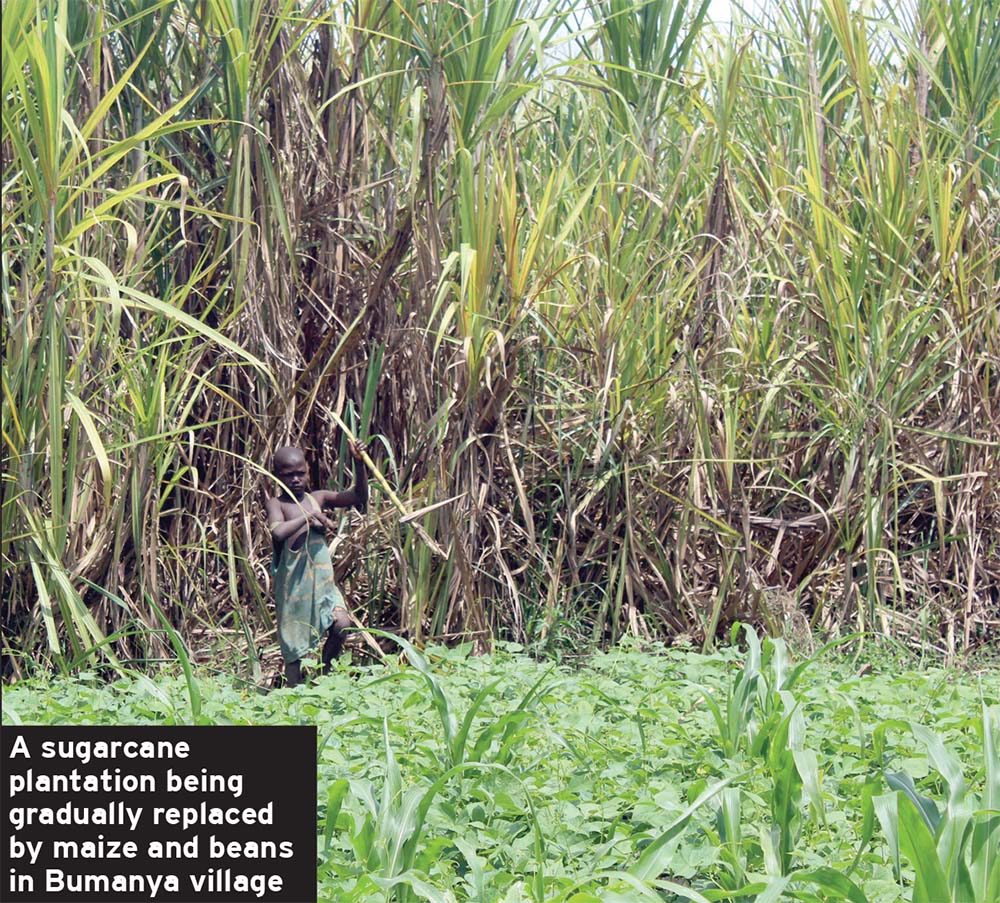Uganda today has many more sugar factories which should have resulted into a drop in the price of the commodity.
However, the recent sharp rise in sugar price has raised more questions than answers.
In Busoga alone, almost each district has a factory with the sub-region boasting seven sugar mills located in Kaliro, Jinja, Kamuli, Buyende, Bugiri and Mayuge.
Elijah Kagoda, the Kaliro district chairperson, said the presence of the numerous sugar mills had prompted a shift from growing food crops to mainly concentrating on sugarcane.
“The popular move had compromised food security in the sub-region, until when sugarcane price per tonne dropped to almost sh90,000 by last year. It was that scenario that woke up some farmers to change to other crops,” he said.
Were the permits politicised?
Hassan Mutengu, a resident of Lugolole village in Mayuge district, said most permits to supply cane to factories in the Busoga sub-region have been given to politicians.
“This starts from local councillors to legislators now acting as middlemen between the farmer and the factory administration. This demoralised many out-growers with a sizeable number abandoning sugarcane farming,” he said.
Joseph Kitimbo, a farmer from Namulesa village in Jinja district, echoes a similar view, saying politicians have hijacked sugarcane trade, hence sidelining the locals.
Current status A 50kg bag of sugar that was going for between sh160,000 and sh165,000 a month ago, has sharply shot up to over sh250,000.
“We were retailing a kilo of sugar at sh4, 000 but the price is now sh5, 500. This is the only way to keep business afloat,” James Kato, a trader at CMS trading centre in Iganga district, said.
Jim Kabeho, a director at Kakira Sugar Works in Jinja, attributes the crisis to the unhealthy competition between mushrooming sugar factories.
He says Kakira had nurtured its base of out-growers that was supplying quite well, until other players entered the market.
“The cost of operations has gone up too, with petroleum products like diesel quite expensive. How do you expect sugar factories to produce at a lower cost?” Kabeho, also the chairperson of Uganda Sugar Manufacturers Association, wondered.
Abubaker Ojwang, the chairperson of Busoga Sugarcane Out-growers Association, says a tonne of sugarcane now goes for about sh175,000.
“By March this year, sugarcane was trading at almost sh100,000 per tonne. However, a shortage caused by the scramble for the limited cane by the many sugar mills has pushed it to sh175,000,” Ojwang says.
Scramble for sugarcane
The recently demarcated sugarcane loading yards just outside Kiyunga town in Luuka district and at Mugoya parking yard in Iganga district speak volumes about the ongoing struggle for the crop.
Juliet Sabano, a resident of Kiyunga town, said the white Tata trucks that are staged at the loading yards belong to a Jinja-based sugar mill.
“They have solved the transport challenge for cane farmers. At the same time, they are hitting two birds with one stone by ensuring they take as much sugarcane as possible from their competitors,” Sabano said.

Musa Kasoone, a sugarcane farmer at Budooma village, Luuka district, believes that mill owners have set up cane-loading yards upcountry to ensure they take only the good quality sugarcane.
“Due to cane scarcity, some unscrupulous farmers and middlemen had been loading even low quality cane and delivering them to factory gates. However, when management opts to come to the ground, they can avoid that,” Kasoone says.
What Authorities advise
Ojwang urges government to offer incentives to sugarcane farmers in terms of farm inputs like fertilisers and tractors to rejuvenate the sector.
“The farmers need to show that they matter. Part of the current problems arose from neglect of these key players in the sugar production process,” he suggests.
What others say
Moses Tabula, a sugarcane farmer from Nawandala village in Iganga district, said politicians should stop the monopoly of cane-supply permits and leave the business to the common farmer.
“That way,” he said, adding: “We shall stop working under uncertainty and grow enough sugarcane for supply to the factories.”
Sarah Naigaga, a resident of Namalemba parish in Bugweri district, said most commodities are becoming expensive nowadays. It was only a matter of time for sugar to also follow suit.
What went wrong?
Abdullah Balunywa, a local leader in Bulamagi sub-county, Iganga district said the drop in sugarcane demand could have arisen from the high supply which has triggered a fall in prices paid by the factories.
“Unfortunately, the frustrated farmers who had invested a lot on the farms decided to do away with the cane. I have cases of farmers in Bulamogi who set sugarcane plantations on fire and replaced them with maize or sweet potatoes,” Balunywa said.
Regina Namugaya, a sugarcane farmer at Nankoma village in Bugiri district, said the price of sugarcane dropped drastically due to many suppliers.
“Some of us had secured loans in order to grow cane so it was not being cost-effective. Many local farmers opted to cut down the sugarcane in preference for other crops like maize,” Namugaya noted.
Charles Kiwanuka, a farmer at Busei parish in Iganga town, shared a similar view, saying sugarcane farmers had crowded the business, leading to the drop in the price of sugarcane.
“Even after growing, it was not automatic that one could cut and supply to sugar mills. Some suffered losses with cut cane not being collected due to technicalities involving supply permits,” Kiwanuka said.





